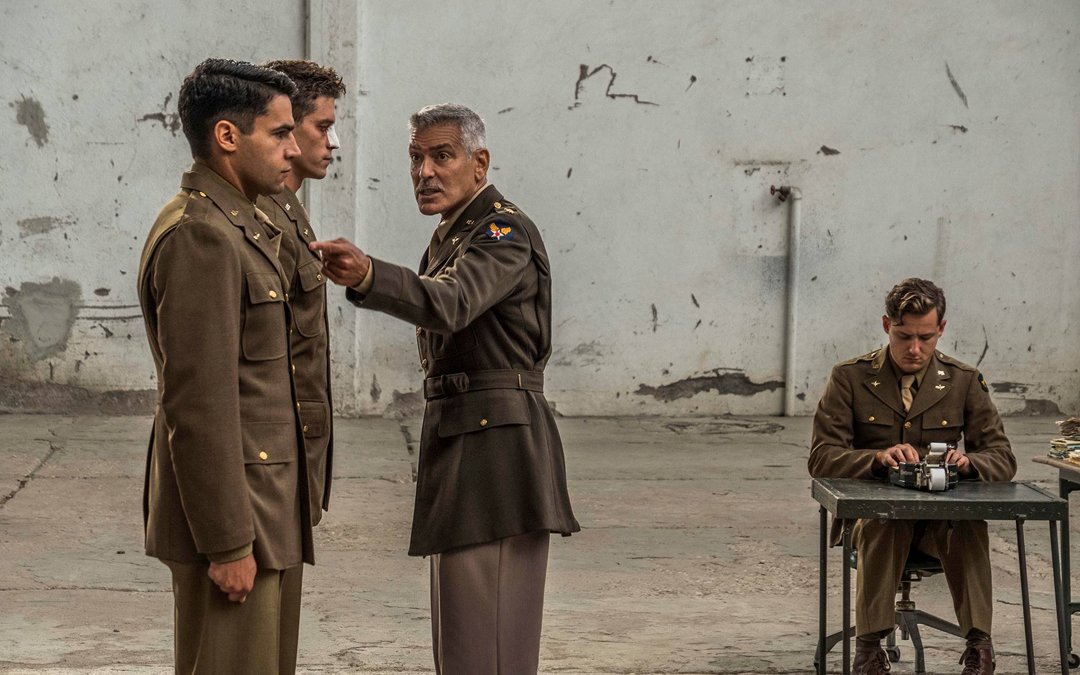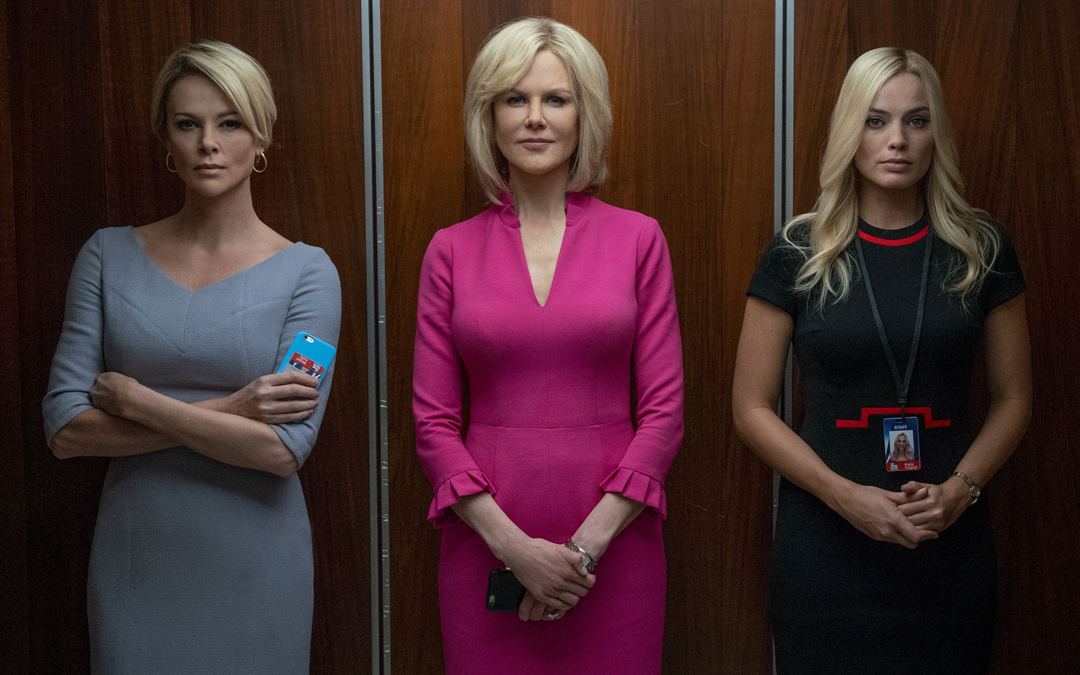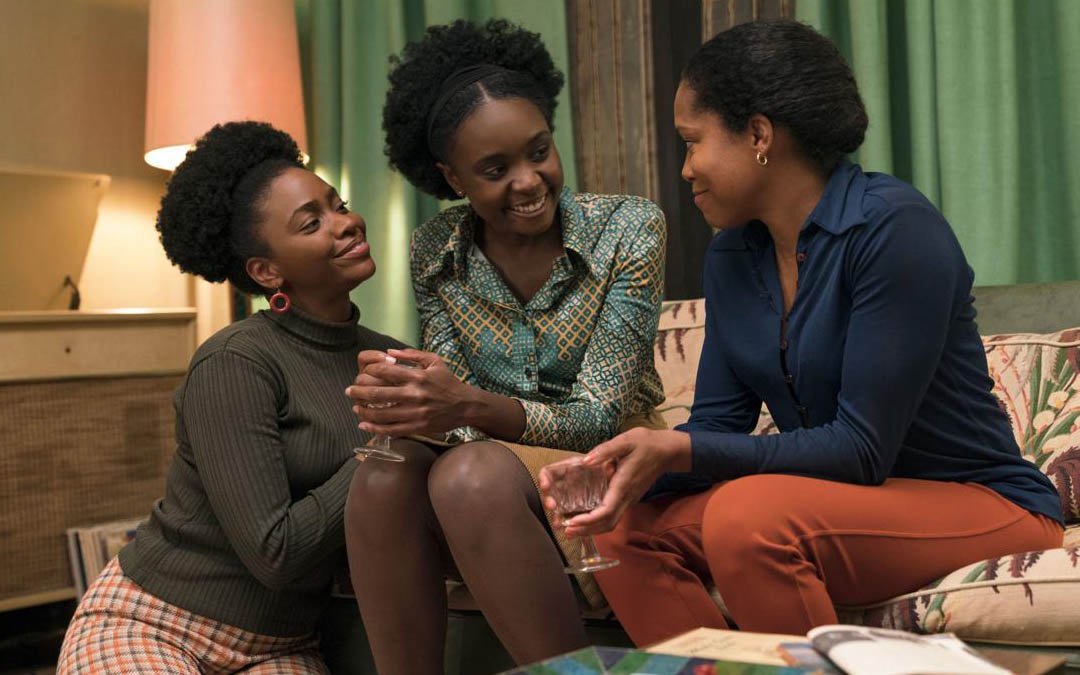All the Write Moves: 'Fosse/Verdon'
April 22, 2019
The new FX miniseries Fosse/Verdon is a treat for theater fans — and not just because two of the big names behind Hamilton are involved. Depicting the intertwined lives of legendary choreographer/director Bob Fosse, who died in 1987, and celebrated dancer Gwen Verdon, who died in 2000, the series is executive produced by Hamilton creator Lin-Manuel Miranda and multiple episodes were directed by Hamilton’s Thomas Kail.
Yet while Fosse/Verdon offers plenty to thrill its core demographic, thanks to lengthy scenes of dance rehearsals, Fosse/Verdon is structured like a straightforward character drama, albeit one spanning many decades and splitting focus between two main characters. That the show utilizes a prismatic approach is only natural, because Fosse/Verdon exists in the shadow of the even more prismatic All That Jazz (1979), an Oscar®-winning movie that Fosse made about himself. Sort of. (More on that in a minute).
Given these givens, Fosse/Verdon — developed by Kail and Dear Evan Hansen playwright Steven Levenson, and starring Sam Rockwell (as Fosse) and Michelle Williams (as Verdon) — reflects a truly ambitious agenda. It aspires to correct the historical record, reconsider a famous artist’s process, and investigate the bond that kept Fosse and Verdon together even after their marriage collapsed.
REMEMBER GWEN
In All That Jazz, Fosse portrays himself (by way of a character named Joe Gideon) as an artistic genius hampered by insecurity, moral weakness, and self-destructive vices. It’s one of the stranger semi-autobiographical portraits in film history, simultaneously self-aggrandizing and self-loathing. Nonetheless, the portrayal hews to the problematic “great man” tradition, a patriarchal ideology that ascribes historical importance to the accomplishments of individual males. Hence the odious phrase “behind every great man is a great woman,” as if the life partner of “great man” is inherently subordinate. For example, the character representing Verdon in All That Jazz is formidable — a righteously indignant woman who possess both talent and taste — but she does not seem essential to the Fosse character’s creative process.
From its earliest frames, Fosse/Verdon strives to tell Fosse’s story in a more inclusive way, so the first episode is filled with vignettes suggesting that Verdon was crucial to the execution of musical numbers in the first two movies that Fosse directed, Sweet Charity (1969) and Cabaret (1972). It’s tempting to say that this new take is simply an expression of #MeToo outrage, but the biography upon which Fosse/Verdon is based predates #MeToo, and Nicole Fosse, the only child of Fosse and Verdon, is a co-executive producer of the miniseries. The #MeToo coincidence matters, but it’s not the whole story. As its title suggests, Fosse/Verdon is all about investigating how important collaboration was to Fosse’s achievements. Embedded within this investigation is the question of why historians have largely reduced Verdon, a Broadway legend who won four Tony awards, to the position of a supporting player in her husband’s story.
If you, like the creators of Fosse/Verdon, seek to revisit true-life material that has already been dramatized, then it is essential to find a new take. All That Jazz used pseudonyms as well as surrealistic sequences to give an impressionistic riff on Fosse’s complicated identity. Fosse/Verdon uses real names and, at least in the first episode, restricts fantastical flourishes to dreamlike visions. Combined with the repositioning of Verdon as an active partner in Fosse’s creative process, the show works hard to differentiate itself from All That Jazz. Furthermore, because the miniseries is several hours long, it has room to show much more of Fosse’s life than All That Jazz could.
Takeaway: Looking at familiar stories with fresh eyes sparks new revelations.
PRETTY PICTURES
Throughout his career, Fosse was criticized for prioritizing style over substance, as when skeptics noted that his choreography created “pretty pictures” through the arrangement of bodies onstage. Fosse/Verdon uses this aspect of Fosse’s biography to strong effect in the first episode. While filming the famous Sweet Charity number “Hey Big Spender,” Fosse burns through time and money getting the blocking of several dancers just right for a master-shot composition, and the series suggests that Verdon was the person who actually gave the dancers proper dramatic motivation. Despite these efforts, Sweet Charity flopped.
When Fosse takes a painstaking approach to blocking the Cabaret number “Mein Herr,” producer Cy Feuer (Paul Reiser) becomes enraged at Fosse’s seemingly superficial perfectionism, featuring that history will repeat itself. The juxtaposition of these two moments places viewers inside Fosse’s angst. We sense his aesthetic/artistic drive, because each time he looks at a rehearsal of a musical number, he sees flaws and shortcomings. Yet we can also sympathize with Feuer’s perspective — wasn’t it Fosse’s job to show up to the set with clear ideas about how to execute musical numbers?
While the main focus of Fosse/Verdon is dramatizing the title characters’ love story, a strong secondary focus is exploring the art-vs.-commerce conundrum. Art moves at its own pace, and a serious artist rarely knows the final shape of his or her creation until it is discovered through painstaking trial and error. Generally speaking, commerce is more predictable, a regulated process of manufacturing products and making them available for purchase. By its nature, filmmaking — like theater — requires an awkward marriage between art and commerce.
Add into that complicated situation the idiosyncratic personalities of artists, as epitomized by Fosse’s perfectionism, and fascinating drama results. Does the box office failure of Sweet Charity suggest that Fosse’s “pretty pictures” overwhelmed the rest of the movie? And does the success of Cabaret imply that all Fosse needed to support his “pretty pictures” was a stronger narrative? By focusing on process, Fosse/Verdon avoids easy answers to these questions.
Takeaway: Showing how characters do things raises interesting questions about why they do things.
EXTRAORDINARY PEOPLE
One of the first episode’s subplots involves Fosse, who was in real life a serial adulterer, cheating on Verdon while he’s filming Cabaret in Germany. After spending several hours with a pretty translator named Hannah (Christiane Seidel), Fosse seduces her by framing his glamorous life as a sort of failure. “I didn’t want to be a director,” he says. “All I wanted to be was Fred Astaire.” This expression of vulnerability, combined with Fosse’s charisma and other wiles, is enough to sweep Hannah off her feet. Like the whole “pretty pictures” business, this story element gets into complicated terrain. Is Fosse just a male dog who’ll say anything to score? Or is he a wounded soul who needs constant intimate connection, no matter how inappropriate, to feel alive?
Fosse himself considered these issues in All That Jazz, so the onus is on Fosse/Verdon to dig deeper. To do this, the storytellers involve Verdon’s reactions to an even greater degree than Fosse did in All That Jazz, because showing two viewpoints on the same experience naturally results in richer depictions. Additionally, the storytellers appear poised to move, in subsequent episodes, beyond simplistic notions of moral valuation. After all, calling Fosse out as a cad doesn’t accomplish anything, since that information is readily available.
Conversely, asking difficult questions about why Verdon remained aligned with Fosse, even though he treated her so badly, takes us to someplace we haven’t been — because this also compels us to ask why Fosse felt it was so important to keep Verdon in his life, even though he betrayed her trust again and again.
Takeaway: Insight is more interesting than information.
Written by: Peter Hanson
Peter Hanson is a Los Angeles-based writer, filmmaker and teacher. He directed the screenwriting documentary Tales from the Script, and he teaches at Pepperdine University and UCLA Extension. He provides script consulting at www.GrandRiverFilms.com.- Topics:
- Discussing TV & Film




